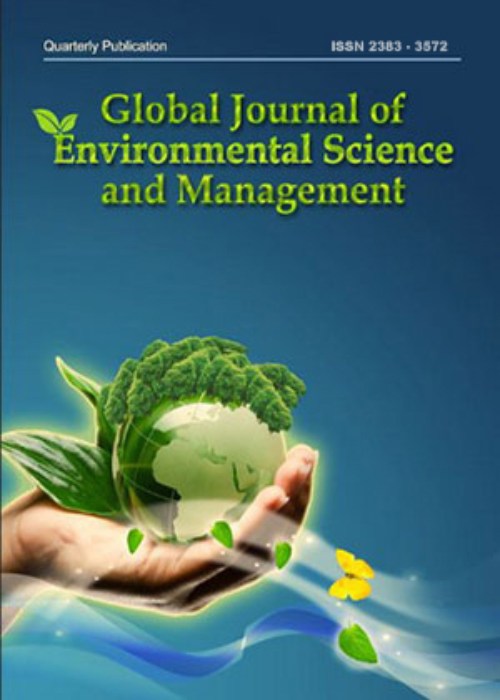Land use variation impacts on trace elements in the tissues and health risks of a commercial fish
Author(s):
Article Type:
Research/Original Article (دارای رتبه معتبر)
Abstract:
BACKGROUND AND OBJECTIVES
Tropical coastal ecosystems globally have been affected by land use changes. This condition has caused a discharge of pollutants into the water, affecting marine organisms, including fish. Due to their habitat preferences, fish are prone to elevate heavy metals in their tissue. Considering fish is consumable, heavy metal levels in fish can lead to health risks. One of the common edible fish in Southeast Asia is Pennahia argentata. Although widely consumed, there is limited information on how land use influences heavy metal levels in various tissues of this species and its health risk. Fish is one of the main food sources in this region, indicating this information’s importance. This study aims to elaborate on and differentiate the heavy metal levels in tissues and land use types, including settlement and mangrove areas on the West Java coast of Indonesia.METHODS
Locations of this study are the Jakarta coast representing anthropogenic influences in the form of settlements and the Subang coast as a site of mangrove covers. This study combined remote sensing and Geographic Information System analysis with heavy metal analysis using inductively coupled plasma and studied heavy metals, including cadmium, copper, and zinc, in fish tissues such as the gill, digestive tract, and muscle. Differences and correlation of heavy metal data in each tissue and location were statistically analyzed using Pearson correlation values (r), Analysis of Variance, and x2-test. The estimated Daily Intake was used to determine the health risk consumption of this species.FINDINGS
All levels of heavy metals are below the World Health Organization’s permissible limits. Zinc is consistently high in all tissues and locations, while cadmium is the lowest. The result shows that the digestive tract consistently has the highest heavy metal levels compared to other tissues in both locations. Heavy metal in muscle has the lowest level. Copper and zinc in the muscles of fish living on the settlement coasts were 62.69% and 37.18% higher (P <0.05) than fish inhabiting mangrove coasts.CONCLUSION
Trace elements in the commercial fish P. argentata were significantly affected by differences in land use. Variations in land use have elevated heavy metal levels in fish tissues. Given the high levels of heavy metals, the digestive tract can be chosen as a specific fish tissue to be used as a bioindicator to monitor cadmium, copper, and zinc, particularly on the West Java coast in Indonesia. Because the Estimated Daily Intake for zinc in Jakarta is high, consuming fish should be done with caution.Keywords:
Bioindicator , Fish , Heavy metal , Land use , tissue
Language:
English
Published:
Global Journal of Environmental Science and Management, Volume:9 Issue: 3, Summer 2023
Pages:
445 to 462
magiran.com/p2540518
دانلود و مطالعه متن این مقاله با یکی از روشهای زیر امکان پذیر است:
اشتراک شخصی
با عضویت و پرداخت آنلاین حق اشتراک یکساله به مبلغ 1,390,000ريال میتوانید 70 عنوان مطلب دانلود کنید!
اشتراک سازمانی
به کتابخانه دانشگاه یا محل کار خود پیشنهاد کنید تا اشتراک سازمانی این پایگاه را برای دسترسی نامحدود همه کاربران به متن مطالب تهیه نمایند!
توجه!
- حق عضویت دریافتی صرف حمایت از نشریات عضو و نگهداری، تکمیل و توسعه مگیران میشود.
- پرداخت حق اشتراک و دانلود مقالات اجازه بازنشر آن در سایر رسانههای چاپی و دیجیتال را به کاربر نمیدهد.
In order to view content subscription is required
Personal subscription
Subscribe magiran.com for 70 € euros via PayPal and download 70 articles during a year.
Organization subscription
Please contact us to subscribe your university or library for unlimited access!


